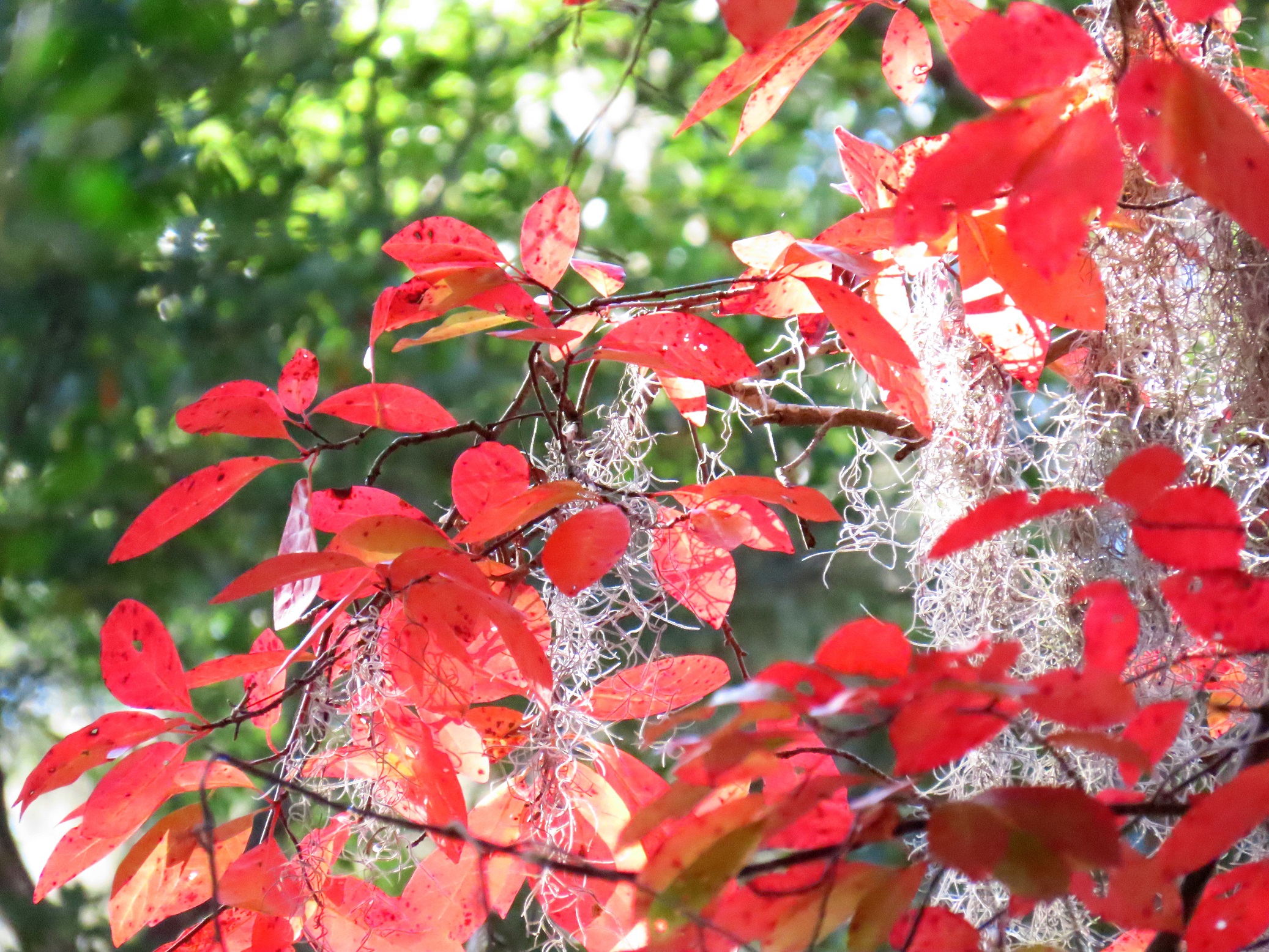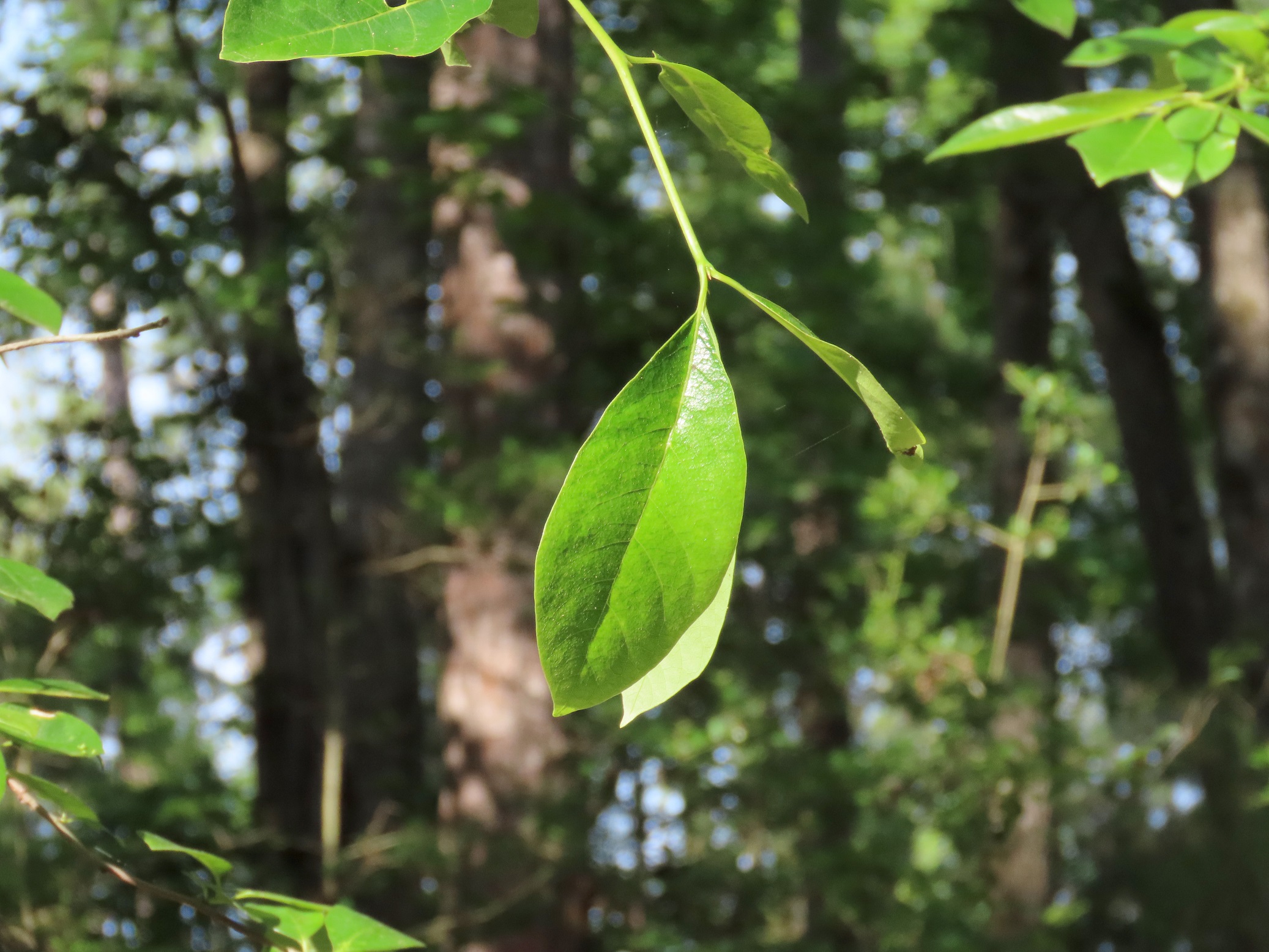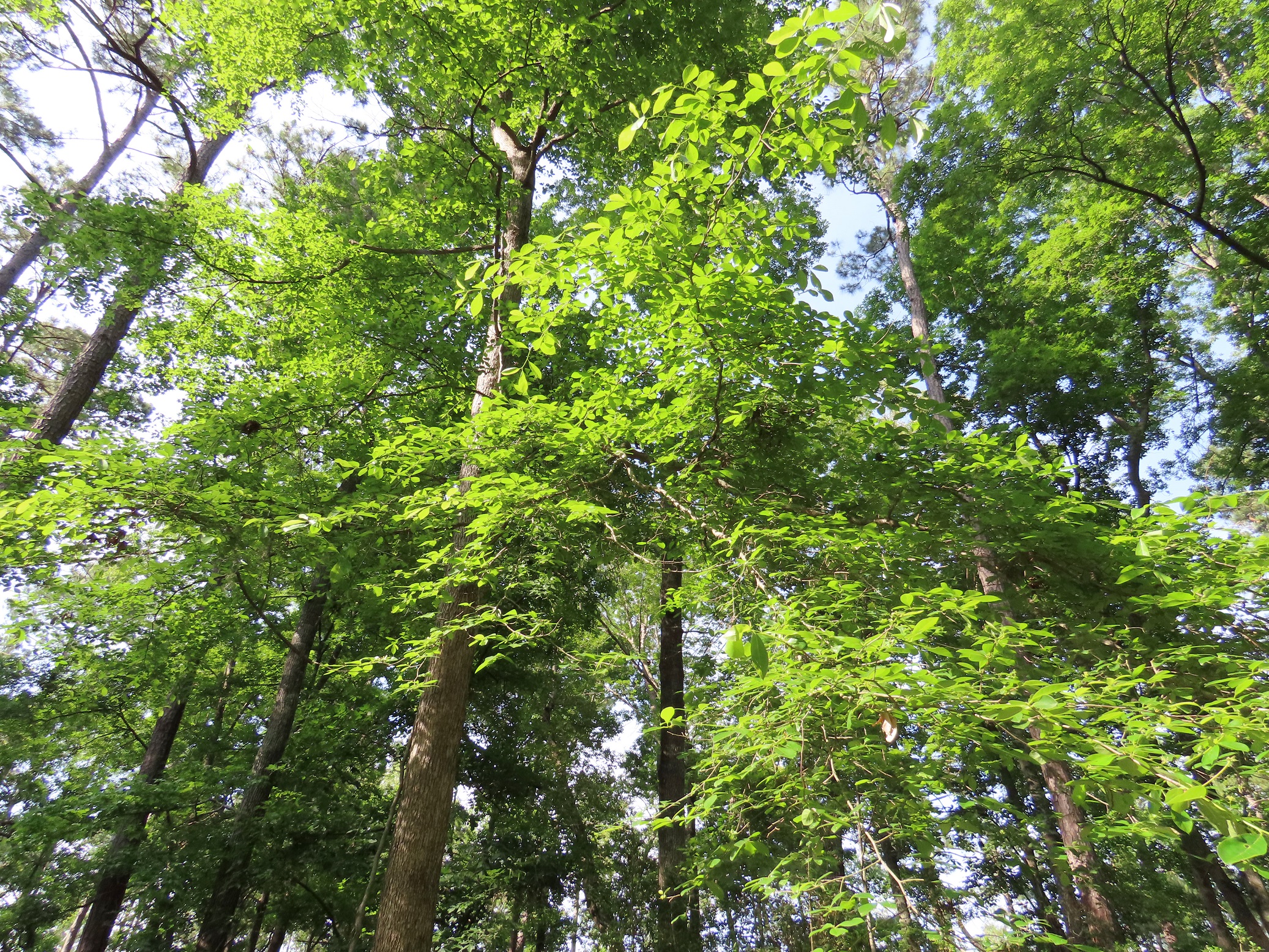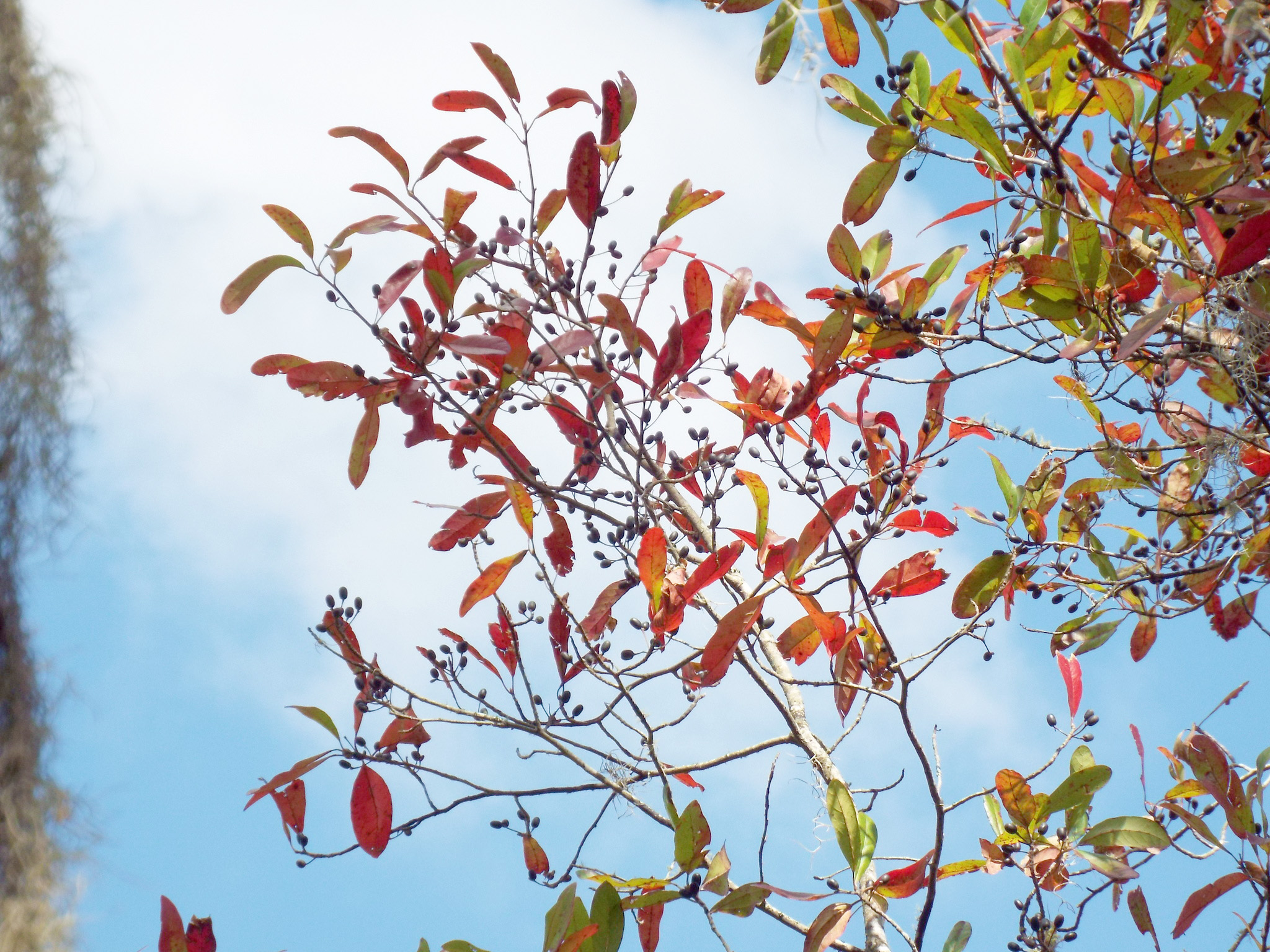





This week for Flora and Fauna Friday it’s a little known midstory tree with flashy fall foliage, the Black Gum (Nyssa sylvatica).
Black Gum is a small tree found widely throughout the Eastern United States yet it is never a dominant forest tree, neither in height nor abundance. Throughout most of their range, Black Gums can be found growing on moist uplands soil but, here in the Lowcountry, they can be found just about anywhere that’s not a marsh or a bottomland. It also has a similar sister species, Swamp Black Gum (N. biflora) which is found in bottomlands and other saturated wetland soils. Black Gum grows to about forty feet in height with a straight trunk and narrow crown, often staying in the midstory and margins of forests. It has a few key characteristics that make it straightforward to identify year-round. In winter, its pale gray-white bark is lightly furrowed and flaky, making it easy to spot at a distance. Closer up, its thin, wiry stems and branches held sharply perpendicular to its trunk give a quick identification to this deciduous tree when leafless. Come spring its leaves emerge, alternately arranged, finger length, deep green, and simple with an obovate shape, making them widest two-thirds of the way to the leaf tip. Come the end of summer, Black Gum sets fruit, producing a bounty of small, egg-shaped, blue-black drupes about the size of blueberries. Yet, fall is when this tree truly stands out. Amidst the evergreen forests of the Sea Islands, Black Gum blazes like a torch in the night. Their crown of foliage begins its color change the end of October, burning into an incandescent beacon of deep scarlet-red. This makes Black Gum one of the very few native trees on the Sea Islands with a fall foliage display.

But Black Gum isn’t just pretty to look at. It’s also wonderful for wildlife! The spring flowers of Black Gum, although tiny, green, and inconspicuous are adored by both native bees and honeybees. The honey those bees produce from Black Gum flowers is highly prized for its flavor. The fruits of Black Gum are also a sought after snack for migratory birds, like Catbirds and Robins, and local residents, like Blue Jays and Mockingbirds. When those fruits hit the ground they provide food for raccoons, turkeys, quail, foxes, rodents, and other mammals. These tart little fruits are edible for people too, and quite tasty! A final fun fact, fresh Black Gum foliage is one of the White-tailed Deer’s most desired browses. This makes Black Gum valuable to land managers for habitat improvement practices like hinge cutting, which brings a trees canopy down to deer level while creating cover for critters to hide in, and a relatively new practice of “mineral stumping”. When most hardwood trees topple over, break off, burn up, or are felled during logging, they will rapidly put out new growth from their roots, making a beeline for the sky. When a tree does so, it mobilizes nutrients, proteins, and sugars that it’s been storing up in its roots. The tree concentrates all that nutrition from a huge root system into just a very small volume of foliage, making those leaves a temporary superfood for herbivores like deer and livestock. This phenomenon has been dubbed a “mineral stump”, turning a native tree into an all-natural mineral lick and feeder in one. This process also happens naturally on the landscape during prescribed fires and wildfires, to which Black Gum has naturally adapted with a response to go for broke and get up out of the range of deer as fast as it can. Meaning for Black Gum, this mineral stump effect is very strong, and the deer come running for the delicacy!